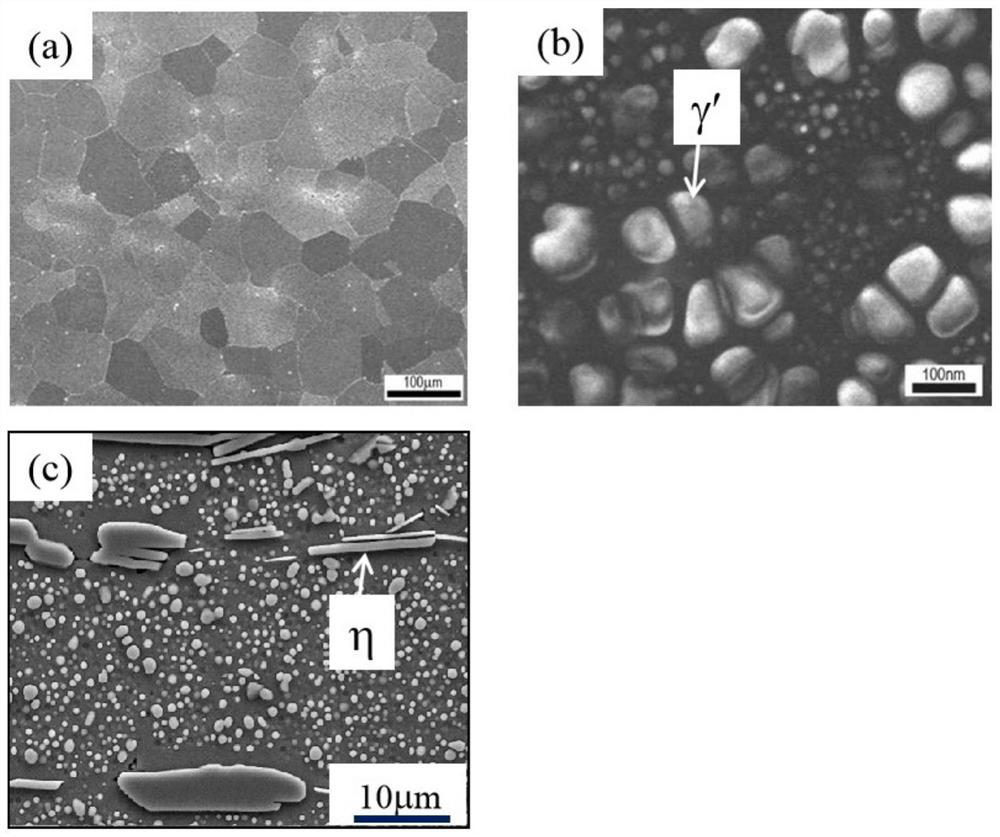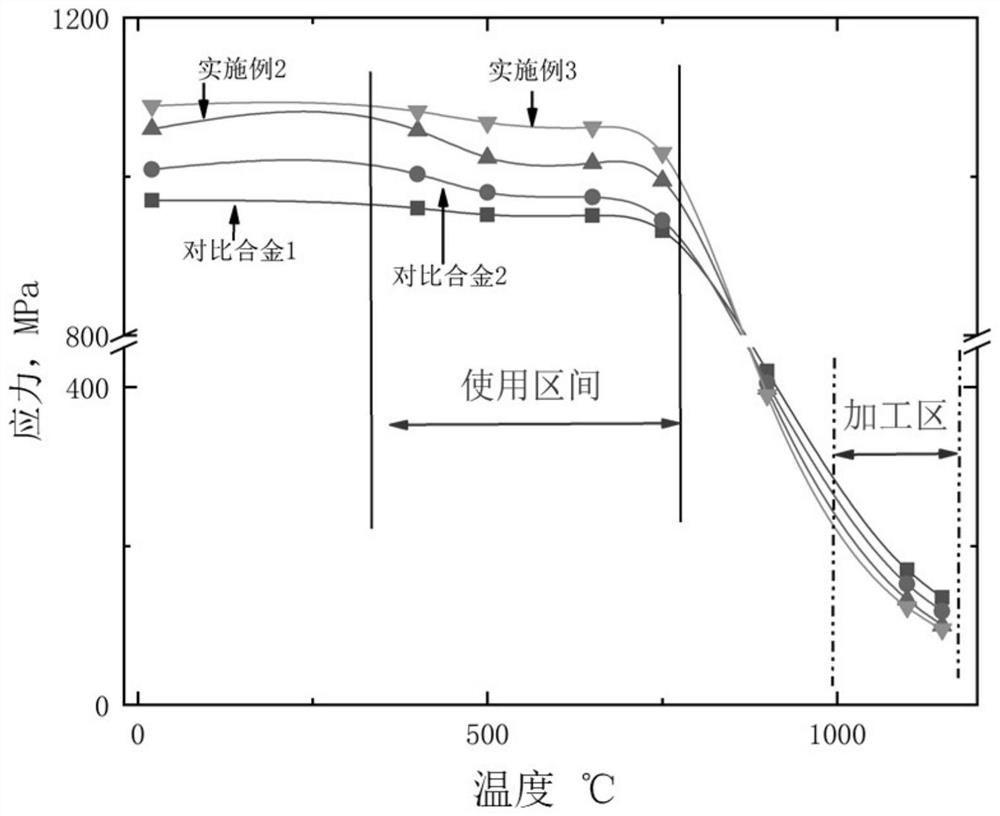Deformed high-temperature alloy and manufacturing method thereof
A technology for deforming high-temperature alloys and alloys, which is applied in the field of metal structural materials, can solve problems such as inability to process and decline in thermal processing performance, and achieve the effects of increasing the use temperature, improving thermal processing performance, and good thermal processing performance
- Summary
- Abstract
- Description
- Claims
- Application Information
AI Technical Summary
Problems solved by technology
Method used
Image
Examples
Embodiment 1
[0065] Embodiment 1 Design a deformed superalloy, wherein, by weight percentage, the chemical composition of the deformed superalloy is: Co 25.8%, Cr 10.4%, Ti 5.2%, Al 2.1%, W 4.2%, Mo 2.5%, C 0.02%, Zr 0.03%, the balance being Ni.
[0066] Wherein, the preparation steps of the deformed superalloy are as follows:
[0067] 1): Add alloy raw materials into a vacuum induction furnace for smelting treatment, pour the smelted alloy solution into an alloy ingot (master alloy) whose chemical composition meets the above design requirements and has no obvious casting defects.
[0068] 2): The alloy ingot is treated at a temperature range of 1130-1150°C for 25 hours, and then at a temperature range of 1170-1200°C for 26 hours.
[0069] 3): Hot forging the homogenized alloy ingot at a temperature between 1100-1150°C to prepare a deformed superalloy (that is, a deformed superalloy rod).
Embodiment 2
[0071] Embodiment 2 Design a deformed superalloy, wherein, by weight percentage, the chemical composition of the deformed superalloy is: Co 20%, Cr 9%, Ti 5.6%, Al 2.5%, W 4.7%, Mo 2.7%, Ta 4%, C 0.02%, Zr 0.03%, and the balance is Ni.
[0072] Wherein, the preparation steps of the deformed superalloy are as follows:
[0073] 1): Add alloy raw materials into a vacuum induction furnace for smelting treatment, pour the smelted alloy solution into an alloy ingot (master alloy) whose chemical composition meets the above design requirements and has no obvious casting defects.
[0074] 2): The alloy ingot is treated at a temperature range of 1130-1150°C for 25 hours, and then at a temperature range of 1170-1200°C for 26 hours.
[0075] 3): Hot forging the homogenized alloy ingot at a temperature between 1100-1150°C to prepare a deformed superalloy (that is, a deformed superalloy rod).
Embodiment 3
[0077]Embodiment 3 A deformed superalloy is designed, wherein, by weight percentage, the chemical composition of the deformed superalloy is: Co 33%, Cr 9.7%, Ti 5.7%, Al 2.4%, W 5%, Mo 2.5%, Ta 2%, C 0.02%, Zr 0.03%, and the balance is Ni.
[0078] Wherein, the preparation steps of the deformed superalloy are as follows:
[0079] 1): Add alloy raw materials into a vacuum induction furnace for smelting treatment, pour the smelted alloy solution into an alloy ingot (master alloy) whose chemical composition meets the above design requirements and has no obvious casting defects.
[0080] 2): The alloy ingot is treated at a temperature range of 1130-1150°C for 25 hours, and then at a temperature range of 1170-1200°C for 26 hours.
[0081] 3): Hot forging the homogenized alloy ingot at a temperature between 1100-1150°C to prepare a deformed superalloy (that is, a deformed superalloy rod).
PUM
| Property | Measurement | Unit |
|---|---|---|
| particle size | aaaaa | aaaaa |
| particle size | aaaaa | aaaaa |
Abstract
Description
Claims
Application Information
 Login to View More
Login to View More - R&D
- Intellectual Property
- Life Sciences
- Materials
- Tech Scout
- Unparalleled Data Quality
- Higher Quality Content
- 60% Fewer Hallucinations
Browse by: Latest US Patents, China's latest patents, Technical Efficacy Thesaurus, Application Domain, Technology Topic, Popular Technical Reports.
© 2025 PatSnap. All rights reserved.Legal|Privacy policy|Modern Slavery Act Transparency Statement|Sitemap|About US| Contact US: help@patsnap.com



